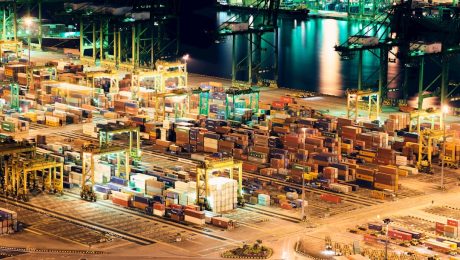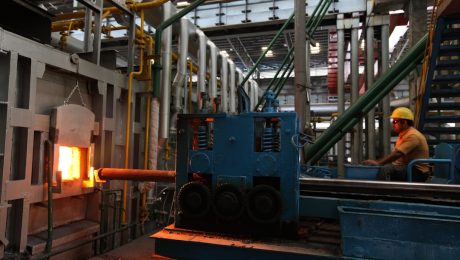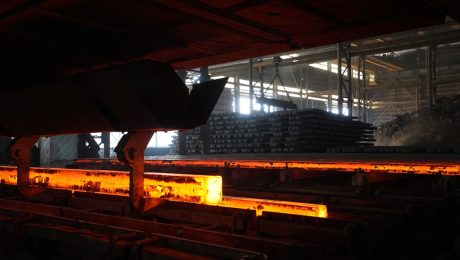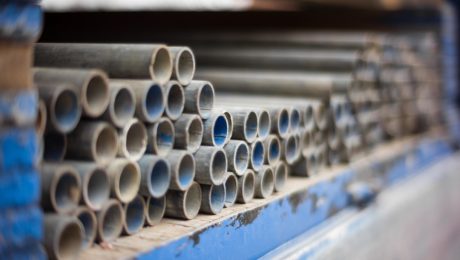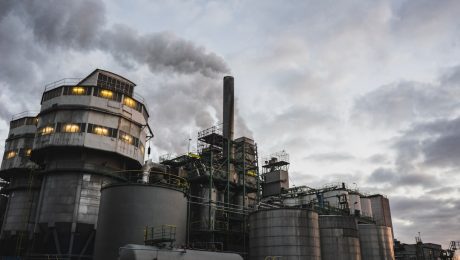In today’s interconnected world, the seamless movement of goods across borders is paramount for businesses of all sizes. This intricate process relies heavily on robust and reliable global logistics partner networks. These networks, comprised of specialized companies and interconnected systems, are the backbone of international trade, ensuring efficiency, cost-effectiveness, and timely delivery of products to consumers worldwide. This comprehensive guide explores the crucial aspects of these networks, providing valuable insights into their operation and importance.
The Architecture of Global Logistics Partner Networks
Global logistics partner networks aren’t simply a collection of independent companies; they are complex ecosystems built on strategic partnerships and collaborations. These networks typically involve a variety of players, including:
- Freight Forwarders: These companies act as intermediaries, managing the entire shipping process, from origin to destination. They handle documentation, customs clearance, and arrange transportation via various modes (sea, air, land).
- Shipping Lines: Responsible for the ocean transportation of goods, these companies operate massive container ships, connecting ports around the globe.
- Air Freight Carriers: Offering faster but more expensive transportation options, air freight carriers play a crucial role in time-sensitive shipments.
- Third-Party Logistics Providers (3PLs): These companies offer a range of logistics services, including warehousing, inventory management, and order fulfillment, often managing entire supply chains.
- Customs Brokers: Specialized in navigating the complexities of international customs regulations, these brokers ensure smooth and compliant border crossings.
- Technology Providers: Software and technology platforms are essential for tracking shipments, managing data, and coordinating activities across the network.
The effectiveness of a global logistics partner network hinges on the seamless integration and communication between these various partners. Efficient data exchange, shared visibility, and collaborative problem-solving are key to success.
Benefits of Leveraging Global Logistics Partner Networks
Businesses that strategically utilize global logistics partner networks reap numerous benefits:
- Cost Reduction: Consolidated shipments, optimized routes, and efficient processes contribute to significant cost savings.
- Improved Efficiency: Streamlined operations, automated processes, and real-time tracking enhance efficiency and reduce lead times.
- Enhanced Visibility and Control: Real-time tracking and data analytics provide greater visibility into the supply chain, enabling proactive management and quicker response to potential issues.
- Scalability and Flexibility: Partner networks offer the scalability to adapt to changing business needs and the flexibility to handle fluctuating demand.
- Access to Expertise and Resources: Partners bring specialized expertise and resources, mitigating risk and ensuring compliance with international regulations.
- Global Reach: Networks extend a company’s reach to global markets, opening up new opportunities for growth and expansion.
Challenges in Managing Global Logistics Partner Networks
Despite the numerous advantages, managing global logistics partner networks presents several challenges:
- Complexity: The sheer complexity of coordinating multiple partners across different time zones and regulatory environments can be daunting.
- Communication Barriers: Effective communication is crucial but can be hampered by language differences, cultural nuances, and differing business practices.
- Risk Management: Geopolitical instability, natural disasters, and supply chain disruptions pose significant risks that require careful mitigation strategies.
- Data Security and Privacy: Sharing sensitive data across multiple partners necessitates robust security measures to protect against breaches and maintain compliance with data privacy regulations.
- Cost Control: Balancing cost optimization with service quality and reliability requires careful planning and negotiation with partners.
- Technology Integration: Integrating different technology systems across the network can be complex and require significant investment.
Strategic Selection of Global Logistics Partners
Choosing the right global logistics partners is critical to the success of any international business. A thorough selection process should consider the following factors:
- Financial Stability and Reputation: Select partners with a proven track record of reliability and financial stability.
- Service Capabilities and Expertise: Assess the partners’ capabilities to meet specific needs, including transportation modes, warehousing, and customs brokerage.
- Technology and Infrastructure: Evaluate the partners’ technology infrastructure and ability to provide real-time tracking and data visibility.
- Geographic Coverage: Ensure the partners have a strong presence in key markets and can provide seamless coverage across the entire supply chain.
- Compliance and Regulatory Expertise: Verify that the partners are compliant with all relevant international regulations and possess the necessary expertise to navigate customs procedures.
- Contractual Agreements: Establish clear contractual agreements that outline responsibilities, service levels, and dispute resolution mechanisms.
Future Trends in Global Logistics Partner Networks
The global logistics landscape is constantly evolving, driven by technological advancements and shifting market dynamics. Key future trends include:
- Increased Automation and Robotics: Automation is transforming various aspects of logistics, from warehousing and transportation to customs clearance.
- Rise of Artificial Intelligence (AI) and Machine Learning (ML): AI and ML are being leveraged for predictive analytics, route optimization, and improved decision-making.
- Blockchain Technology: Blockchain offers the potential to enhance transparency, security, and traceability throughout the supply chain.
- Growth of E-commerce and Omnichannel Logistics: The explosive growth of e-commerce necessitates flexible and agile logistics networks capable of handling increased volumes and diverse delivery options.
- Sustainability and Green Logistics: Growing environmental concerns are driving the adoption of sustainable practices, including fuel-efficient transportation and reduced carbon emissions.
By understanding and adapting to these trends, businesses can optimize their global logistics partner networks for greater efficiency, resilience, and sustainability.
Tags: Global Logistics, Logistics Partner Networks, Supply Chain Management, International Shipping, Freight Forwarding
The world of infrastructure and industrial piping is constantly evolving, driven by the need for stronger, lighter, and more durable materials. Enter carbon fiber-coated steel pipes – a revolutionary advancement combining the inherent strength of steel with the exceptional properties of carbon fiber. This innovative solution offers a compelling alternative to traditional steel pipes, significantly enhancing performance and longevity across diverse applications.
Unveiling the Superior Strength of Carbon Fiber-Coated Steel Pipes
The core advantage of carbon fiber-coated steel pipes lies in their enhanced strength-to-weight ratio. Steel provides the foundational structural integrity, while the carbon fiber coating acts as a reinforcement layer, dramatically increasing tensile strength, compressive strength, and resistance to bending and buckling. This combination results in pipes that are significantly stronger than their steel-only counterparts, yet often lighter, making them easier to transport and install. The carbon fiber’s high modulus of elasticity further contributes to the pipe’s resilience against deformation under pressure.
Enhanced Corrosion Resistance: Protecting Against the Elements
Corrosion is a major concern for steel pipes, particularly in harsh environments. The carbon fiber coating acts as a protective barrier, significantly reducing the pipe’s exposure to corrosive agents like moisture, chemicals, and saltwater. This enhanced corrosion resistance extends the lifespan of the pipes, minimizing maintenance costs and reducing the environmental impact associated with pipe replacement. The specific type of resin used in the carbon fiber composite also plays a crucial role in determining the level of corrosion protection offered.
Manufacturing Process: A Blend of Precision and Innovation
The manufacturing process of carbon fiber-coated steel pipes involves a series of precise steps. Initially, the steel pipe is thoroughly cleaned and prepared to ensure optimal adhesion of the carbon fiber composite. The carbon fiber material, often pre-impregnated with resin (prepreg), is then carefully wrapped around the steel pipe using specialized machinery. This process often involves multiple layers to achieve the desired thickness and strength. The wrapped pipe is then cured under controlled temperature and pressure to solidify the resin and create a strong, monolithic structure. Quality control measures are implemented throughout the process to ensure consistent quality and performance.
Diverse Applications: Where Strength and Durability Meet Demand
The exceptional properties of carbon fiber-coated steel pipes make them suitable for a wide range of applications. These include:
- Oil and Gas Industry: Transporting high-pressure fluids and gases in challenging environments.
- Chemical Processing: Handling corrosive chemicals and demanding process conditions.
- Water Management: Improving the durability and lifespan of water pipelines, particularly in areas prone to corrosion.
- Infrastructure Projects: Constructing stronger and more resilient bridges, tunnels, and other large-scale structures.
- Aerospace and Automotive: Used in specialized applications requiring high strength and low weight.
Cost-Effectiveness: A Long-Term Investment in Reliability
While the initial cost of carbon fiber-coated steel pipes may be higher than traditional steel pipes, the long-term cost-effectiveness is undeniable. Their enhanced durability and resistance to corrosion significantly reduce maintenance and replacement costs over the pipe’s lifespan. The reduced weight also lowers transportation and installation costs. Furthermore, the extended service life translates to lower overall lifecycle costs, making them a financially sound investment for long-term projects.
In conclusion, carbon fiber-coated steel pipes represent a significant advancement in piping technology. Their superior strength, corrosion resistance, and diverse applications make them a compelling choice for various industries seeking enhanced performance and longevity. While the initial investment might be higher, the long-term benefits in terms of reduced maintenance, extended lifespan, and overall cost-effectiveness make them a worthwhile investment for a more resilient and sustainable future.
Tags: carbon fiber pipes, steel pipes, composite pipes, corrosion resistant pipes, high-strength pipes
body {
font-family: sans-serif;
line-height: 1.6;
}
h1, h2, h3 {
color: #333;
}
The steel industry is a significant contributor to global greenhouse gas emissions. Understanding and accurately reporting these emissions is crucial for driving decarbonization efforts and achieving climate goals. This comprehensive guide delves into the complexities of carbon emission reporting in the steel sector, providing clarity on methodologies, scopes, and the importance of transparency.
Understanding the Scopes of Steel Emissions
Reporting carbon emissions follows the widely accepted Greenhouse Gas Protocol, which categorizes emissions into three scopes:
- Scope 1: Direct Emissions: These are emissions directly from owned or controlled sources. In steel production, this includes emissions from coke ovens, blast furnaces, and other combustion processes within the steel mill itself. Accurate measurement relies on meticulous monitoring of fuel consumption, process efficiency, and fugitive emissions.
- Scope 2: Indirect Emissions from Energy Consumption: This encompasses emissions generated from the consumption of purchased electricity, heat, or steam. Steel mills often require substantial energy inputs, making Scope 2 emissions a significant portion of their overall footprint. Reporting requires detailed energy consumption data and information on the emission factors of the electricity grid supplying the plant.
- Scope 3: Indirect Emissions from the Value Chain: This is the most complex scope, encompassing emissions from activities across the entire value chain, both upstream and downstream. Upstream emissions include those related to raw material extraction (iron ore mining, coal mining), transportation of raw materials, and the manufacturing of purchased goods and services. Downstream emissions include those from the transportation and use of steel products by customers. Accurate Scope 3 reporting often requires collaboration with suppliers and customers, and the use of life cycle assessment (LCA) methodologies.
Methodologies for Accurate Emission Calculation
Accurate carbon accounting in the steel industry requires robust methodologies. Common approaches include:
- Tier 1: Market-based accounting: This involves using emission factors from publicly available databases, such as those provided by the Intergovernmental Panel on Climate Change (IPCC) or national environmental agencies. This is a simpler method, but may not be as precise as other approaches.
- Tier 2: Facility-specific accounting: This involves using emission factors that are specific to the steel plant’s operations and energy sources. This requires detailed data collection and analysis, leading to more accurate results. It involves measuring fuel consumption, energy usage, and process efficiencies within the plant.
- Tier 3: Process-based accounting: This is the most detailed method, requiring a comprehensive understanding of the chemical and physical processes involved in steelmaking. It involves detailed mass balance calculations and process modeling to determine emissions at each stage of production. This approach is crucial for identifying emission hotspots and opportunities for reduction.
Data Collection and Verification: Ensuring Accuracy
Accurate carbon emission reporting depends heavily on reliable data collection. This involves:
- Establishing a robust data management system: This system should track energy consumption, fuel usage, raw material inputs, and production outputs. Data should be collected regularly and consistently.
- Implementing monitoring and measurement techniques: This includes using various instruments to measure emissions directly from sources, such as stack monitors for greenhouse gases.
- Employing third-party verification: Independent verification by accredited bodies provides assurance of the accuracy and reliability of the reported emissions. This enhances transparency and builds trust among stakeholders.
The Importance of Transparency and Disclosure
Transparent and accurate carbon emission reporting is crucial for several reasons:
- Investor confidence: Investors are increasingly demanding transparency on environmental, social, and governance (ESG) factors, including carbon emissions. Accurate reporting builds trust and attracts responsible investments.
- Regulatory compliance: Many jurisdictions are implementing carbon reporting regulations, making accurate reporting a legal requirement.
- Stakeholder engagement: Openly communicating emission data allows for informed dialogue with stakeholders, including customers, communities, and NGOs, fostering collaboration on decarbonization strategies.
- Benchmarking and improvement: Accurate emission data allows steel producers to benchmark their performance against industry peers and identify areas for improvement.
Driving Decarbonization through Reporting and Innovation
Carbon emission reporting is not just about compliance; it’s a crucial tool for driving decarbonization. By identifying emission hotspots, steel producers can target areas for improvement through technological innovation and operational efficiencies. This includes investing in low-carbon technologies such as hydrogen-based steelmaking, carbon capture and storage (CCS), and renewable energy sources. Continuous monitoring and reporting are essential to track progress and demonstrate commitment to reducing the industry’s environmental impact.
Conclusion: Accurate and transparent carbon emission reporting is vital for the steel industry’s transition to a low-carbon future. By embracing robust methodologies, investing in data management systems, and fostering collaboration across the value chain, steel producers can play a key role in mitigating climate change.
Tags: Carbon emissions, Steel industry, Greenhouse gas reporting, Scope 1 2 3 emissions, Decarbonization, Sustainability, ESG reporting
body {
font-family: sans-serif;
line-height: 1.6;
}
h1, h2, h3 {
color: #333;
}
h1 {
font-size: 2.5em;
}
h2 {
font-size: 2em;
margin-top: 1.5em;
}
h3 {
font-size: 1.5em;
margin-top: 1em;
}
p {
margin-bottom: 1em;
}
ul {
list-style-type: disc;
margin-left: 20px;
}
Construction nails are seemingly simple components, yet their selection significantly impacts the structural integrity and longevity of any building project. Understanding the standards and durability of different nail types is crucial for professionals and DIY enthusiasts alike. This comprehensive guide will delve into the key aspects of construction nails, ensuring you choose the right nail for the job.
Understanding Nail Gauge and Length Standards
Nail gauge refers to the thickness of the nail shaft, while length is self-explanatory. Both are critical factors influencing holding power and suitability for different materials. The gauge is inversely proportional to the diameter; a smaller gauge number indicates a thicker nail. Common gauges range from 2d (very thick) to 60d (very thin). Length is measured in inches or centimeters and is crucial for penetration depth and secure fastening. Standards like ASTM (American Society for Testing and Materials) define these measurements, ensuring consistency across manufacturers. Deviation from these standards can lead to compromised structural integrity, so always check for compliance.
For example, a 16d common nail is a frequently used size for framing lumber, offering a balance between holding power and ease of driving. A 2d nail, on the other hand, is much thicker and used for heavier-duty applications requiring exceptional strength.
Material Matters: The Impact of Nail Composition on Durability
Construction nails are primarily made from steel, but variations in composition and treatment significantly affect durability. Commonly, nails are galvanized (coated with zinc) to resist corrosion, especially in exterior applications exposed to moisture. Hot-dipped galvanized nails offer superior corrosion resistance compared to electro-galvanized nails. Stainless steel nails provide even greater corrosion protection but are more expensive. Other materials like aluminum or copper nails are used in specific applications where corrosion resistance is paramount or when interaction with certain materials needs to be minimized.
The hardness and tensile strength of the nail material also influence its durability. Higher-strength nails are less prone to bending or breaking during driving, crucial for applications involving hard woods or dense materials. The manufacturing process also impacts the final product; properly heat-treated nails will have enhanced strength and resilience.
Types of Construction Nails and Their Applications
Different nail types are designed for specific purposes. Common nails are versatile and suitable for general framing and construction. Finishing nails have smaller heads, leaving a less prominent mark after driving, ideal for trim work and interior finishes. Box nails have a slightly thinner shaft and are used for fastening boxes and crates. Roofing nails are designed with large heads and rings or barbs to prevent them from pulling out of roofing materials. Drywall nails have a slightly wider head and a sharper point to penetrate drywall easily without causing significant damage.
Choosing the right nail type ensures optimal performance and avoids potential issues like nail pops (nails working loose and pushing the material up) or insufficient holding power. Understanding these variations is essential for achieving a structurally sound and aesthetically pleasing finish.
Testing and Certification: Ensuring Nail Quality and Performance
Reputable nail manufacturers adhere to rigorous testing and certification procedures to guarantee product quality and performance. These tests assess factors like tensile strength, shear strength, and resistance to bending or breakage. Independent testing agencies may also evaluate nails to ensure compliance with relevant standards and provide unbiased assessments of their durability. Look for certifications from recognized organizations when selecting nails for critical applications to ensure they meet the required specifications.
Certifications provide assurance that the nails have undergone comprehensive testing and meet specific performance standards, offering peace of mind for both contractors and homeowners.
Choosing the Right Nail for Your Project: A Practical Guide
Selecting the correct nail involves considering several factors: the type of material being fastened (wood, metal, concrete), the thickness and density of the material, the intended load or stress on the joint, and the desired aesthetic outcome. For instance, framing a house requires stronger nails (like 16d or larger) than hanging a picture (where small finishing nails suffice). Always consult building codes and relevant standards to determine the appropriate nail size and type for your specific application.
When in doubt, consult with a building professional or a knowledgeable supplier. They can provide expert advice and ensure you choose the right nails for a durable and safe construction project. Overlooking this step can lead to costly repairs or even structural failure in the long term.
By understanding the standards and durability aspects of construction nails, you can significantly improve the quality and longevity of your projects. Remember to always prioritize safety and choose high-quality nails that meet relevant standards to ensure a robust and lasting outcome.
SEO-Friendly Tags:
- Construction Nails
- Nail Gauge
- Nail Durability
- Construction Nail Standards
- Types of Construction Nails
In today’s competitive market, ensuring product quality and safety is paramount. This is where test reports and certifications play a crucial role. They act as a powerful testament to a product’s reliability, compliance with industry standards, and adherence to safety regulations. This comprehensive guide will delve into the intricacies of test reports and certifications, explaining their significance and providing insights into their various aspects.
Understanding the Significance of Test Reports
Test reports are detailed documents that record the results of testing conducted on a product, material, or process. They provide objective evidence of a product’s performance, functionality, and safety. These reports typically include:
- Product description: Detailed specifications of the tested item.
- Testing methodology: A description of the tests performed, including standards followed.
- Test results: Numerical data, graphical representations, and qualitative observations.
- Conclusion: A summary of the findings and an assessment of whether the product meets the specified requirements.
- Date of testing and signatures: Ensuring authenticity and traceability.
The value of a well-structured test report lies in its ability to provide stakeholders – manufacturers, customers, regulatory bodies – with the confidence needed to make informed decisions. A comprehensive report minimizes ambiguity and allows for clear communication regarding product performance.
The Crucial Role of Certifications
Certifications go a step further than test reports. They are formal recognitions issued by independent third-party organizations, verifying that a product or process meets specific standards and requirements. These certifications are often legally mandated for certain products and industries, demonstrating compliance with safety regulations and quality standards. Obtaining a certification involves rigorous testing and auditing processes, ensuring that the product consistently meets the required criteria.
Examples of widely recognized certifications include:
- ISO 9001: Focuses on quality management systems.
- ISO 14001: Relates to environmental management systems.
- CE Marking: Indicates conformity with health, safety, and environmental protection legislation in the European Economic Area.
- UL Certification: Demonstrates safety for various products in North America.
- FDA Approval: Required for many food, drug, and medical devices in the United States.
The presence of a recognized certification significantly enhances consumer trust and can provide a competitive advantage in the marketplace.
Navigating Different Testing Standards and Regulations
The specific testing standards and regulations a product must meet vary significantly depending on its intended use, industry, and geographical location. Understanding these requirements is crucial for ensuring compliance and avoiding potential legal issues. Some key considerations include:
- Industry-specific standards: Many industries have their own sets of standards and best practices that dictate product testing requirements.
- Regional regulations: Different countries and regions have different regulatory bodies and compliance requirements.
- Safety regulations: These are often mandatory and relate to product safety and consumer protection.
- Environmental regulations: These pertain to the environmental impact of the product and its manufacturing process.
Companies must carefully research and understand the applicable standards and regulations for their products to ensure compliance throughout their lifecycle.
The Benefits of Investing in Thorough Testing and Certification
Investing in thorough testing and certification offers numerous benefits, including:
- Enhanced product quality and reliability: Rigorous testing identifies and addresses potential defects, leading to higher quality and more reliable products.
- Improved consumer trust and brand reputation: Certifications demonstrate a commitment to quality and safety, boosting consumer confidence and brand image.
- Increased market access and competitiveness: Certifications are often required for market entry in certain regions and can provide a competitive edge.
- Reduced liability and legal risks: Compliance with regulations minimizes the risk of legal issues and product recalls.
- Improved efficiency and cost savings: Early identification of defects can prevent costly rework and recalls later in the product lifecycle.
While the initial investment in testing and certification may seem significant, the long-term benefits far outweigh the costs.
Choosing the Right Testing Laboratory and Certification Body
Selecting a reputable testing laboratory and certification body is critical for ensuring the accuracy and validity of test reports and certifications. Key factors to consider include:
- Accreditation: Ensure the laboratory and certification body are accredited by recognized organizations.
- Experience and expertise: Choose a provider with relevant experience and expertise in testing your specific product type.
- Reputation and track record: Research the provider’s reputation and look for positive reviews and testimonials.
- Cost and turnaround time: Compare costs and turnaround times from different providers.
- Transparency and communication: Choose a provider that offers clear communication and provides regular updates throughout the testing process.
Investing time in selecting the right provider will ensure that the testing and certification process is efficient, effective, and produces reliable results.
In conclusion, test reports and certifications are indispensable tools for ensuring product quality, safety, and compliance. By understanding their significance and investing in thorough testing and certification, businesses can build consumer trust, enhance their brand reputation, and gain a competitive edge in the marketplace.
body {
font-family: sans-serif;
line-height: 1.6;
}
h1, h2, h3 {
color: #333;
}
The steel industry is a significant contributor to global greenhouse gas emissions. As pressure mounts to reduce carbon footprints, accurate and transparent carbon emission reporting is no longer optional – it’s crucial for sustainability, investor confidence, and regulatory compliance. This comprehensive guide delves into the complexities of reporting carbon emissions in steel production, covering key aspects from source identification to reporting frameworks.
1. Identifying Carbon Emission Sources in Steel Production
Understanding where emissions originate is the first step towards effective reduction. Steel production involves numerous processes, each contributing to the overall carbon footprint. These sources can be broadly categorized as:
- Direct Emissions (Scope 1): These are emissions directly from owned or controlled sources. In steel production, this primarily includes emissions from the combustion of fossil fuels in blast furnaces (coke production and ironmaking), electric arc furnaces (EAFs), and other heating processes. The type of fuel used significantly impacts emissions; coal-based processes generate far more CO2 than natural gas or hydrogen.
- Indirect Emissions from Energy Consumption (Scope 2): These emissions result from the generation of electricity consumed by the steel plant. This includes electricity used in powering furnaces, machinery, and other operations. The carbon intensity of the electricity grid significantly impacts Scope 2 emissions. Using renewable energy sources like solar or wind power dramatically reduces this footprint.
- Indirect Emissions from the Value Chain (Scope 3): These are emissions that occur throughout the steel value chain, but outside the direct control of the steel producer. This includes emissions from raw material extraction (iron ore mining, coal mining), transportation of raw materials and finished products, and the use of steel in downstream applications. Scope 3 emissions are often the most challenging to quantify and manage, requiring collaboration across the entire supply chain.
2. Methods for Calculating Steel Carbon Emissions
Accurate calculation requires a robust methodology. Several approaches exist, each with varying levels of complexity and data requirements:
- Mass Balance Approach: This method calculates emissions based on the mass of raw materials used and the associated emission factors. It’s relatively straightforward but may not capture all emission sources accurately.
- Process-Based Approach: This involves a detailed analysis of each process step within the steel production chain, quantifying emissions from each stage. It’s more accurate but requires more detailed data and expertise.
- Hybrid Approach: This combines elements of both mass balance and process-based approaches, aiming for a balance between accuracy and practicality.
Accurate data collection is crucial. This includes energy consumption data, fuel usage data, raw material inputs, and waste generation data. Regular monitoring and verification are essential to ensure the accuracy of emission calculations.
3. Reporting Frameworks and Standards for Steel Emissions
Several frameworks and standards guide carbon emission reporting. Adherence to these frameworks enhances transparency and comparability:
- Greenhouse Gas Protocol: This widely recognized standard provides a comprehensive framework for measuring and reporting greenhouse gas emissions. It offers guidance on Scope 1, 2, and 3 emissions.
- Carbon Disclosure Project (CDP): CDP is a non-profit organization that drives companies to disclose their environmental impacts, including carbon emissions. Many investors use CDP data to assess a company’s sustainability performance.
- Science Based Targets initiative (SBTi): The SBTi helps companies set science-based emissions reduction targets aligned with the Paris Agreement goals. Steel companies are increasingly setting and reporting on such targets.
- Industry-Specific Standards: Various industry associations are developing specific standards and guidelines for carbon emission reporting in the steel industry, fostering greater consistency and comparability.
4. Challenges and Opportunities in Steel Emission Reporting
Accurate and comprehensive reporting faces several challenges:
- Data Availability and Quality: Access to reliable and consistent data across the entire value chain can be challenging.
- Complexity of Steel Production: The multifaceted nature of steel production makes comprehensive emission accounting complex.
- Scope 3 Emissions: Quantifying and managing Scope 3 emissions requires significant collaboration across the supply chain.
However, these challenges also present opportunities. Improved data management systems, advancements in emission monitoring technologies, and increased collaboration across the value chain can significantly enhance reporting accuracy and drive emissions reductions.
5. The Future of Carbon Emission Reporting in the Steel Industry
The future of carbon emission reporting in the steel industry will be shaped by several factors:
- Increased Regulatory Scrutiny: Governments worldwide are introducing stricter regulations on greenhouse gas emissions, driving greater transparency and accountability.
- Investor Demand for Sustainability: Investors are increasingly demanding greater transparency and action on climate change, influencing corporate sustainability strategies.
- Technological Advancements: Innovations in steel production technologies, such as hydrogen-based steelmaking, will significantly reduce emissions and alter reporting methodologies.
- Supply Chain Collaboration: Effective collaboration across the entire steel value chain is crucial for achieving significant emissions reductions and accurate reporting.
Accurate and transparent carbon emission reporting is not just a compliance exercise; it’s a crucial step towards decarbonizing the steel industry and building a more sustainable future.
Tags: Steel emissions, carbon reporting, steel industry sustainability, greenhouse gas emissions, decarbonization steel
Carbon steel has long been the workhorse of the metal industry. However, demand for materials with enhanced properties – higher strength, corrosion resistance, or specific thermal characteristics – has driven the development of a wide range of alternative steel alloys. This post delves into the fascinating world of these alloys, exploring their unique characteristics and diverse applications.
1. Stainless Steels: The Champions of Corrosion Resistance
Stainless steels are arguably the most well-known alternative steel alloys. Their exceptional corrosion resistance stems from the addition of chromium (typically at least 10.5%), which forms a passive chromium oxide layer on the surface, protecting the underlying metal from oxidation. Different grades of stainless steel offer varying levels of corrosion resistance, strength, and ductility, catering to a wide range of applications. For instance:
- Austenitic stainless steels (like 304 and 316): Known for their excellent corrosion resistance and ductility, making them ideal for food processing equipment, medical instruments, and architectural applications.
- Ferritic stainless steels (like 430): Offer good corrosion resistance and are typically less expensive than austenitic grades. They are often used in automotive exhaust systems and appliances.
- Martensitic stainless steels (like 410): Possess high strength and hardness, making them suitable for cutlery, surgical instruments, and high-strength fasteners.
- Duplex stainless steels: Combine the properties of austenitic and ferritic stainless steels, resulting in high strength, corrosion resistance, and improved weldability.
The choice of stainless steel grade depends heavily on the specific application and the environmental conditions it will face.
2. High-Strength Low-Alloy (HSLA) Steels: Maximizing Strength and Efficiency
HSLA steels achieve high strength through controlled additions of alloying elements like manganese, silicon, copper, vanadium, and niobium. These additions refine the steel’s microstructure, leading to significant improvements in yield strength without a substantial increase in weight. This makes HSLA steels particularly attractive for applications where weight reduction is crucial, such as:
- Automotive industry: Used extensively in car bodies, chassis, and other components to improve fuel efficiency.
- Construction industry: Employed in bridges, buildings, and pipelines due to their high strength-to-weight ratio.
- Transportation industry: Utilized in railway cars, ships, and other transportation vehicles.
The precise composition of HSLA steel is tailored to meet the specific requirements of each application, offering a balance between strength, toughness, weldability, and formability.
3. Tool Steels: The Backbone of Manufacturing
Tool steels are designed for high-temperature applications and exhibit exceptional hardness, wear resistance, and dimensional stability. They are essential components in various manufacturing processes. Common alloying elements include tungsten, molybdenum, chromium, vanadium, and cobalt. These elements contribute to the steel’s ability to withstand high temperatures and pressures without losing its hardness or shape. Different tool steels are optimized for specific applications, such as:
- High-speed steels: Maintain hardness at high temperatures, making them suitable for cutting tools used in machining operations.
- Cold work tool steels: Used for tools that operate at room temperature, such as punches, dies, and molds.
- Shock-resistant tool steels: Designed to withstand impact loads, often found in chisels, hammers, and other impact tools.
The selection of the appropriate tool steel is critical for ensuring the efficiency and longevity of the manufacturing process.
4. Maraging Steels: Achieving Exceptional Strength and Toughness
Maraging steels are a unique class of high-strength steels characterized by their exceptional strength and toughness. They achieve this through a martensitic transformation during aging, a heat treatment process that significantly enhances their mechanical properties. These steels are typically low in carbon content but contain high levels of nickel, cobalt, molybdenum, and titanium. This combination results in materials with outstanding tensile strength and excellent ductility, making them ideal for demanding applications, such as:
- Aerospace industry: Used in high-strength components of aircraft and spacecraft.
- Defense industry: Employed in high-performance weapons systems.
- Medical industry: Used in some high-precision medical implants.
Maraging steels are relatively expensive, but their unique combination of properties justifies their use in critical applications where reliability and performance are paramount.
5. Weathering Steels: Embracing the Patina of Time
Weathering steels, also known as Corten steels, are designed to develop a protective rust layer that prevents further corrosion. This unique characteristic eliminates the need for painting or other surface treatments, reducing maintenance costs and environmental impact. The protective rust layer is formed through a controlled oxidation process, and the specific composition of the alloy influences the rate and appearance of this patina. Weathering steels are widely used in:
- Architectural applications: Creating visually striking and low-maintenance building facades.
- Bridges and infrastructure: Reducing the need for frequent repainting and maintenance.
- Sculptures and art installations: Adding an element of natural weathering and aging to artistic creations.
The aesthetic appeal and low-maintenance nature of weathering steels have made them increasingly popular in various applications.
The development of alternative steel alloys continues to push the boundaries of material science, providing innovative solutions for a wide range of industries. By understanding the unique properties and applications of these materials, engineers and designers can select the optimal steel alloy for their specific needs, leading to more efficient, durable, and sustainable products.
Tags: Alternative Steel Alloys, Stainless Steel, HSLA Steel, Tool Steel, Maraging Steel, Weathering Steel
The steel industry is a significant contributor to global greenhouse gas (GHG) emissions. As pressure mounts to reduce carbon footprints and meet climate targets, accurate and transparent carbon emission reporting is no longer optional—it’s essential. This comprehensive guide delves into the complexities of reporting carbon emissions within the steel sector, providing clarity on methodologies, challenges, and best practices.
Understanding the Scope of Steel Emissions: Scope 1, 2, and 3
Accurately reporting carbon emissions requires a clear understanding of the different emission scopes defined by the Greenhouse Gas Protocol. This widely accepted standard categorizes emissions into three scopes:
- Scope 1: Direct Emissions: These are emissions directly from owned or controlled sources. In steel production, this includes emissions from coke ovens, blast furnaces, and direct combustion in processes like heating and power generation within the steel plant. Accurate measurement involves meticulous tracking of fuel consumption, process parameters, and emission factors specific to the used fuels and technologies.
- Scope 2: Indirect Emissions from Energy Consumption: These emissions result from the generation of purchased electricity, steam, heating, and cooling consumed by the steel facility. Reporting requires obtaining data on energy consumption from suppliers, often in the form of energy certificates or statements detailing the carbon intensity of their generation process. This often involves using location-specific emission factors.
- Scope 3: Indirect Emissions from the Value Chain: This is the most complex category, encompassing emissions from sources not owned or controlled by the steel producer but occurring in its value chain. This includes emissions from:
- Upstream: Raw material extraction (iron ore mining, coal mining, limestone quarrying), transportation of raw materials, and manufacturing of purchased goods and services.
- Downstream: Transportation of steel products, use of steel products by customers (e.g., embodied carbon in buildings), and end-of-life treatment of steel products.
Accurate Scope 3 reporting requires robust data collection across the entire supply chain, often involving collaboration with suppliers and customers. Life Cycle Assessment (LCA) methodologies are frequently employed for this purpose.
Data Collection and Calculation Methodologies for Steel Emissions
Accurate carbon accounting demands rigorous data collection. This involves:
- Inventory of Emission Sources: Identifying all sources of GHG emissions across all three scopes.
- Measurement and Monitoring: Utilizing direct measurement techniques (e.g., continuous emission monitoring systems) and estimations based on activity data and emission factors for various processes.
- Emission Factors: Applying appropriate emission factors specific to the type of fuel used, technology employed, and geographical location. These factors are regularly updated and refined based on scientific advancements.
- Data Management: Implementing a robust data management system to ensure data accuracy, consistency, and traceability. This often involves using specialized software for carbon accounting.
Calculation methodologies vary depending on the scope and complexity of the emission inventory. Tier 1 methods use readily available default emission factors, while Tier 2 and 3 methods involve more detailed process-specific data and potentially site-specific measurements.
Reporting Standards and Frameworks for Steel Emissions
Several established standards and frameworks guide the reporting of GHG emissions, ensuring consistency and comparability across different organizations. Key frameworks include:
- Greenhouse Gas Protocol: Provides a comprehensive framework for corporate GHG accounting and reporting.
- Carbon Disclosure Project (CDP): A global environmental disclosure platform that encourages companies to disclose their climate-related risks and opportunities.
- Global Reporting Initiative (GRI): A widely used sustainability reporting framework that incorporates GHG emissions reporting.
- Task Force on Climate-related Financial Disclosures (TCFD): Focuses on climate-related financial risks and opportunities, influencing how companies report climate-related data to investors.
Adherence to these standards enhances transparency and credibility, allowing stakeholders to effectively assess the steel producer’s climate performance.
Challenges and Opportunities in Steel Emission Reporting
Reporting carbon emissions in the steel industry presents several challenges:
- Data Availability and Quality: Access to comprehensive and reliable data across the entire value chain can be difficult.
- Complexity of Scope 3 Emissions: Accurately quantifying Scope 3 emissions, particularly those related to the supply chain, requires significant effort and collaboration.
- Data Consistency and Comparability: Variations in data collection methods and emission factors can hinder comparability across different steel producers.
- Technological Limitations: Accurate measurement of emissions from some processes may require advanced monitoring technologies.
However, these challenges also present significant opportunities. Improved data collection and reporting can drive innovation in decarbonization technologies and supply chain optimization, leading to a more sustainable steel industry.
The Future of Carbon Emission Reporting in Steel: Towards Net-Zero
The future of carbon emission reporting in the steel industry is inextricably linked to the pursuit of net-zero emissions. This requires not only accurate reporting but also ambitious decarbonization strategies. This includes:
- Investing in low-carbon technologies: This includes exploring and implementing technologies like hydrogen-based steelmaking, carbon capture, utilization, and storage (CCUS), and electric arc furnaces.
- Improving energy efficiency: Optimizing production processes to reduce energy consumption and associated emissions.
- Sustainable sourcing of raw materials: Partnering with suppliers who prioritize environmentally responsible practices.
- Circular economy approaches: Promoting steel recycling and reuse to reduce the need for virgin materials.
- Enhanced transparency and collaboration: Working collaboratively across the value chain to improve data sharing and transparency.
By embracing these strategies and continuing to refine carbon emission reporting methodologies, the steel industry can pave the way for a more sustainable and climate-resilient future.
Tags: carbon emissions, steel industry, carbon footprint, GHG emissions, steel production
body { font-family: sans-serif; line-height: 1.6; }
h1, h2, h3 { color: #333; }
img { max-width: 100%; height: auto; }
Cold drawn flat bars are a ubiquitous component in countless industries, offering a compelling blend of precision, strength, and surface finish. This comprehensive guide delves into the intricacies of these versatile steel products, exploring their manufacturing process, unique properties, diverse applications, and the crucial factors to consider when selecting the right cold drawn flat bar for your specific needs.
The Manufacturing Process: From Coil to Precision
The journey of a cold drawn flat bar begins with hot-rolled steel coils. These coils undergo a series of crucial steps to transform them into the precise, high-quality components we know. The process starts with pickling, where the coil is cleaned to remove surface impurities. This is followed by cold drawing, the heart of the process. Here, the steel is drawn through a series of dies under high tension, reducing its cross-sectional area and increasing its strength and surface finish. The precise control during this stage is crucial for achieving the desired dimensional accuracy and surface quality. After drawing, the bars may undergo further processing, such as straightening, cutting to length, and sometimes heat treatment to achieve specific mechanical properties. The entire process is highly automated, ensuring consistency and precision in the final product.
Exceptional Properties: Strength, Precision, and Surface Finish
Cold drawing significantly enhances the mechanical properties of the steel. Compared to hot-rolled bars, cold drawn flat bars exhibit superior tensile strength, yield strength, and fatigue resistance. This enhanced strength is a direct result of the cold working process, which introduces significant strain hardening within the steel’s microstructure. Furthermore, cold drawing results in exceptional dimensional accuracy and a smoother, more refined surface finish. This superior surface quality minimizes the need for further machining, saving time and costs in downstream applications. The tight tolerances achievable with cold drawn bars are critical in applications requiring precise fits and intricate designs.
Diverse Applications: Where Strength Meets Precision
The combination of strength, precision, and superior surface finish makes cold drawn flat bars suitable for a wide range of applications across various industries. They are frequently used in automotive components, such as chassis parts, suspension systems, and steering components. The aerospace industry utilizes them in aircraft structures and engine components where high strength-to-weight ratio is crucial. Precision machinery, tooling, and the construction industry also benefit significantly from the exceptional properties of cold drawn flat bars. Their use in hydraulic cylinders, guide rails, and structural reinforcement showcases their versatility and reliability under demanding conditions. The superior surface finish also makes them ideal for applications requiring minimal post-processing or specialized coatings.
Advantages of Choosing Cold Drawn Flat Bars
The advantages of using cold drawn flat bars are numerous and significantly impact manufacturing efficiency and product quality. The superior strength-to-weight ratio reduces material usage and lowers overall component weight. The precise dimensions minimize machining and finishing requirements, reducing production time and costs. The enhanced surface finish improves corrosion resistance and allows for better adhesion of coatings, extending the lifespan of the final product. The consistent quality and dimensional accuracy ensure reliable performance and reduce the risk of assembly issues. Ultimately, choosing cold drawn flat bars leads to improved product performance, cost savings, and enhanced manufacturing efficiency.
Selecting the Right Cold Drawn Flat Bar: Key Considerations
Selecting the appropriate cold drawn flat bar involves careful consideration of several factors. The required material grade, specified by its chemical composition and mechanical properties, is paramount. The desired dimensions, including thickness, width, and length, must be accurately defined to ensure a proper fit and function. The surface finish requirements, whether a standard finish or a specialized surface treatment, should be clearly specified. Finally, the tolerances acceptable for the dimensions are crucial, as cold drawing offers very tight tolerances, but the specific requirements must be defined upfront. Consulting with a reputable supplier experienced in cold drawn steel products is essential to ensure the chosen material meets all the necessary specifications and performance criteria.
Cold drawn flat bars are more than just a steel product; they are a testament to the precision and engineering capabilities of modern manufacturing. Their unique combination of properties makes them a critical component in a vast array of applications, ensuring strength, reliability, and efficiency across various industries.
SEO Tags:
Cold drawn flat bars, steel bars, precision steel, cold drawn steel, engineering materials
Carbon steel has long been the workhorse of the construction, manufacturing, and automotive industries. However, the demand for materials with enhanced properties – higher strength, corrosion resistance, improved weldability, or specific thermal characteristics – has driven the development of a wide range of alternative steel alloys. These advanced materials offer significant advantages in various applications, pushing the boundaries of what’s possible in engineering and design.
1. High-Strength Low-Alloy (HSLA) Steels: A Balance of Strength and Weldability
HSLA steels represent a crucial category of alternative steel alloys. They achieve significantly higher strength than conventional carbon steel through the addition of small amounts of alloying elements such as manganese, silicon, copper, nickel, chromium, molybdenum, niobium, and vanadium. These additions refine the microstructure, enhancing yield strength and tensile strength without compromising weldability – a crucial factor in many applications. The improved strength-to-weight ratio of HSLA steels makes them ideal for applications where weight reduction is critical, such as automotive body panels, pipelines, and railway rolling stock. Furthermore, the enhanced formability of some HSLA grades allows for complex shapes and designs, contributing to cost savings in manufacturing.
2. The Diverse World of Stainless Steels: Corrosion Resistance Redefined
Stainless steels are another dominant class of alternative steel alloys, renowned for their exceptional corrosion resistance. This resistance stems primarily from the presence of chromium, which forms a passive chromium oxide layer on the steel’s surface, protecting it from oxidation and environmental degradation. However, the world of stainless steel is far from homogenous. Different grades offer varying properties, catering to specific needs. Austenitic stainless steels (like 304 and 316) are known for their excellent ductility and corrosion resistance in various environments. Ferritic stainless steels offer higher strength and better resistance to stress corrosion cracking. Martensitic stainless steels are heat-treatable, achieving high hardness and strength. Duplex stainless steels, a combination of austenitic and ferritic phases, offer a unique blend of high strength, corrosion resistance, and weldability. The choice of stainless steel grade depends heavily on the intended application and the corrosive environment.
3. Tool Steels: The Backbone of Precision Manufacturing
Tool steels are high-carbon, alloyed steels designed to withstand the extreme stresses and temperatures encountered during machining operations. They possess exceptional hardness, wear resistance, and toughness, making them essential for cutting tools, dies, molds, and other tooling applications. Different alloying elements impart specific properties. Tungsten, molybdenum, and vanadium enhance hardness and wear resistance, while chromium improves corrosion resistance. High-speed steels (HSS) are a specific type of tool steel designed to withstand the high temperatures generated during high-speed machining. The selection of the appropriate tool steel depends on the specific machining operation, the material being machined, and the desired tool life.
4. Maraging Steels: Exceptional Strength at Elevated Temperatures
Maraging steels are a unique class of iron-nickel-based alloys known for their exceptionally high strength and toughness. They achieve these properties through a martensitic transformation during aging heat treatments. The absence of significant carbon content allows for excellent weldability and machinability in the annealed state, followed by the development of exceptional strength and toughness after aging. Maraging steels find applications in aerospace components, pressure vessels, and high-strength fasteners where extreme strength and toughness are paramount. Their ability to retain their strength at elevated temperatures also makes them suitable for demanding high-temperature applications.
5. Exploring Other Advanced Steel Alloys: Expanding the Possibilities
Beyond the major categories discussed above, a plethora of other advanced steel alloys cater to niche applications requiring highly specialized properties. These include:
- Weathering steels (Corten steels): These steels develop a protective rust layer, reducing the need for painting and maintenance.
- Silicon steels: Used in electrical applications due to their high magnetic permeability.
- Spring steels: Designed for their high elasticity and resistance to fatigue.
- Bearing steels: Exhibit high hardness, wear resistance, and fatigue strength.
- Nickel-chromium-molybdenum steels: Offer excellent corrosion resistance and high strength at elevated temperatures.
The continuous development and refinement of these and other steel alloys are pushing the boundaries of material science and engineering, enabling the creation of lighter, stronger, and more durable structures and components.
The selection of the optimal steel alloy requires careful consideration of the specific application requirements, including strength, toughness, corrosion resistance, weldability, machinability, cost, and environmental impact. Understanding the diverse range of available alternatives allows engineers and designers to make informed decisions, leading to innovative solutions and advancements across numerous industries.
SEO Tags:
- Alternative Steel Alloys
- High-Strength Low-Alloy Steel
- Stainless Steel Grades
- Tool Steel Selection
- Advanced Steel Alloys

